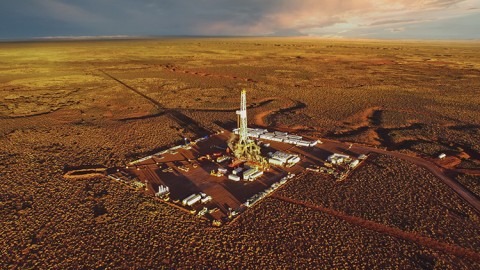To begin with, the oil and gas sector has advanced substantially over the past decade thanks to the implementation of new and innovative decarbonization strategies that have improved operations and explored previously unimaginable potential. Oil and gas research has undergone a rapid digital transition, and many businesses are now coming to recognize meaningful investment returns. Companies might anticipate even greater achievements in the future by keeping up with and improving their strategies and future plans. With that, it is important to ask: how can oil and gas firms go through a transition process in order to boost the oil and gas sector’s operational effectiveness?
General Overview
Firstly, setting emission-reduction targets in the oil and gas sector is still in its beginning stages. In fact, it is expected that oil and gas corporations’ reported plans to reduce Greenhouse Gas (GHG) emissions by approximately 30%, significantly below the standards set forth in the Paris Agreement. Potentially, improved operating efficiency, digitalization, and the utilization of renewable energy sources might enable oil and gas activities to completely decarbonize. The majority of decarbonization capability must be realized through capital spending, although some strategies, such as the use of renewable energy, electrification, and operational efficiency, are now economically viable for several oil and gas projects. Besides other things, the decarbonization capacity of oil and gas sites differs depending on the product, oil and gas activity, power source, and network emissions.
Consequently, effective operation equates to responsible operation. Most of all, it is a cost-effective first move in lowering pollutants, the third largest cause of pollutants, as well as intermittent flaring and venting. A recent study demonstrates that firms in the top percentile of operational efficiency have the least pollutants in the industry based on the resilience of their operations across a worldwide range after fundamental considerations are taken into account. The finest resources emit approximately three times as much as those in the third quartile, which can accomplish just under 7 kg per barrel of oil equivalent.
The Necessity of Decarbonization
Furthermore, the country’s demand for fossil fuels is rising in spite of efforts to transition to a carbon-neutral society. The oil and petrol sector has a problem in supplying the rising demand for energy while also lowering total emissions. In order to promote the transition to a low-carbon future, such situations require persuasive methods.
As suggested by a data analyst in the oil and gas industry, “While [decarbonization] is underrated, it is one of the most practical ways to allow oil and gas companies to be able to become effective in their operations, but also it will allow [companies] to achieve targets in sustainability and take off some of the pressure that oil and gas companies are facing because of the amount of emissions.” One method to uphold environmental requirements is to integrate carbon-neutral forms of technologies like wind and solar within carbon-intensive projects in the industry. Oil and gas firms may anticipate cutting emissions and use of energy along the whole production chain by using dependable and integrated solutions.
Decarbonization Methods
There are a multitude of ways in which the oil and gas sector would be able to achieve decarbonization through operational efficiency. For example, some studies have suggested that up to US$5.8 trillion would be needed annually until 2050 to enable the energy transition. The oil and gas industry is highly suited to finance new energy ventures due to its extensive expertise in obtaining cash, even in the most intense of sectors, in addition to its capacity for sustaining strong balance books and reliable returns.
Additionally, markets for renewable energy are expanding quickly. Decision making on the optimum source of energy for each effort will get more difficult as technology evolves and as clean energy sources expand. Hence, the oil and gas industry has long used competitive intelligence to provide the appropriate energy to the appropriate location at the appropriate time at the appropriate price.
Moreover, in terms of risk management, there is a risk of budget overruns and setbacks when investing the sum needed to have an impact on the world. Oil and gas firms must be efficient at seeing and minimizing the risks associated with big projects, in addition to those that result from doing business in several different countries and in a wildly uncertain market.
In conclusion, the lack of pipeline infrastructure, growing sustainability and environmental concerns, decreased output, and greater legislations have all contributed to the oil and gas industry’s rising operational efficiency during the last few years. Oil companies are relying on decarbonization to boost efficiency and compete favourably with rivals. Businesses are beginning to understand how decarbonization may help them keep their market share and provide fresh potential growth. Organizations need a transition process to take use of evolving environmental goals without losing efficiency in order to make the most of these new prospects.








